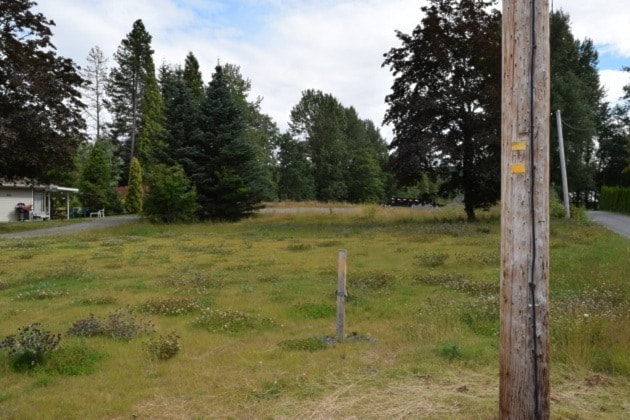Terrace City Council has rezoned 1.6 hectares at 4643 Graham Ave. from agricultural to urban residential to allow the owner to build 52 residential units suitable for ages 55 and older.
One reason given for supporting this rezoning request was that the property is “awkward for farming”.
Having grown up on a Saskatchewan farm, I wondered exactly what makes this property too awkward to be farmed. Is the acreage wedge-shaped? Slanted dangerous to tip-toed tractors? Sprinkled with boulders? I later learned the property is long and narrow and the required setbacks would limit the amount of useable land.
I’ve not seen this property but I’m told it’s near the Skeena River, subject to flooding if the river rises as it did a few years ago. The prospect of building senior housing on a flood plain, if that’s what this is, makes me question city council’s wisdom and commitment to safe housing for seniors. In the event of flooding, wet farm land soon dries out little worse for the experience. Balance that against evacuating frail seniors by boat along with their walkers and wheelchairs.
When city hall passes out building permits, do they stipulate or even suggest all new construction should be readily accessible to a wide range of disabilities?
At the moment, Mills Hospital and Terraceview both house patients who would prefer – and are capable of – living in their own homes, if their buildings had been built disability friendly. Until their homes are renovated to accommodate their current needs or suitable alternate housing is found, they occupy an acute care bed I’m told is costing our health care system $2,000 per day.
As for safeguarding farmland so Terrace can produce more of its own food ... that’s a pipe dream. Only a cosmic shift in thinking and loss of Wi-Fi would take advantage of the farmland the town does have. We favour paved two-car driveways and hedges useful only to birds.
During the Second World War, my Uncle Ken in Saskatoon with a family of four to feed grew peas, corn, beans, rows of raspberries, and beds of strawberries in the back yard. The front yard had its own array of produce. Not an inch was lawn.
In Thornhill I know of one lot with a patch of grass the size of a ping pong table. Hedges of raspberries and plums border the lot. Half a dozen hens feast on weeds pulled from between rows of lettuce, cauliflower, and cabbage. The owner decries the great swatches of land hereabout that bring forth only weekend chores.
Terrace is a magnet for retiring seniors who run into homes built years ago with no thought to ageing mobility. Med. Surg. in Prince George says their Bruno outdoor stairlifts are “selling like hot cakes” despite their average cost of $8,000 installed. Such expensive modifications are sometimes needed before some patients can return to their homes.
From today forth, every residential building constructed should be fully and easily accessible to the average disabled tenant with level ground floor access, 32-inch-wide doors and minimum 36-inch-wide hallways throughout, doorknobs (and faucets) that can be opened with a closed fist; smooth hardwood floors or short pile, tightly woven carpet anchored at all edges. Light switches, electrical outlets, thermostats and other environmental controls at accessible levels. Bathrooms with walk-in tubs and reinforced walls for later installation of grab bars. In-home laundry facilities on the same level.
Rezoning suggests intent to build. Terrace is awash in promises. The community needs less stalling, more prompt contractor follow-through to free up acute care hospital beds and healthcare dollars.
